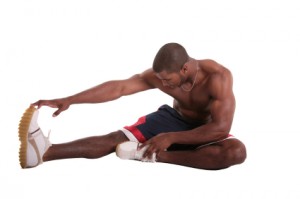How regularly do you treat injured athletes with reduced lower limb flexibility? The answer from many of you would likely be all day long! It has been well established that athletes with reduced lower limb flexibility are at greater risk of injury (Murphy et al., 2003). Thus, it would be logical that a program of regular stretching, which has been shown to improve lower limb flexibility (Harvey et al., 2002), would reduce this injury risk… wouldn’t it? Well, not conclusively…
As sports physiotherapists we regularly assess and treat hamstring strains, sometimes on a daily basis! Hawkins et al. (2001) showed that hamstring injuries accounted for approximately 12% of football injuries, and thus are extremely common. Given their frequency, hamstring injuries have been discussed commonly on this site. However, to date, we have not paid much attention to the often recommended intervention of spinal manual therapy and its role in the evidence based management of hamstring strains….
As I suggested in the previous post: assessment of scapular dyskinesis; sports physiotherapists regularly assess and rehabilitate shoulder dysfunctions and pathologies. As a sports physiotherapists it is important to evaluate the contributing factors to shoulder pathology. A common contributor, seen in 68-100% of shoulder injuries, is scapular dyskinesis. If you treat shoulders, ‘treating the scapula’ is absolutely paramount … ignore it at your own peril. This article will discuss some treatment options for scapular dyskinesis
Let me set the scene for you. You are at the oval and your athletes are warming up prior to competition, and one calls out “can you come stretch my hammys?”. This is an obvious request for a PNF therapist-assisted stretch, and you will likely oblige for a few reasons. Today I would like to discuss some research that challenges the notion that PNF stretching deliver superior immediate improvements in range of motion..




